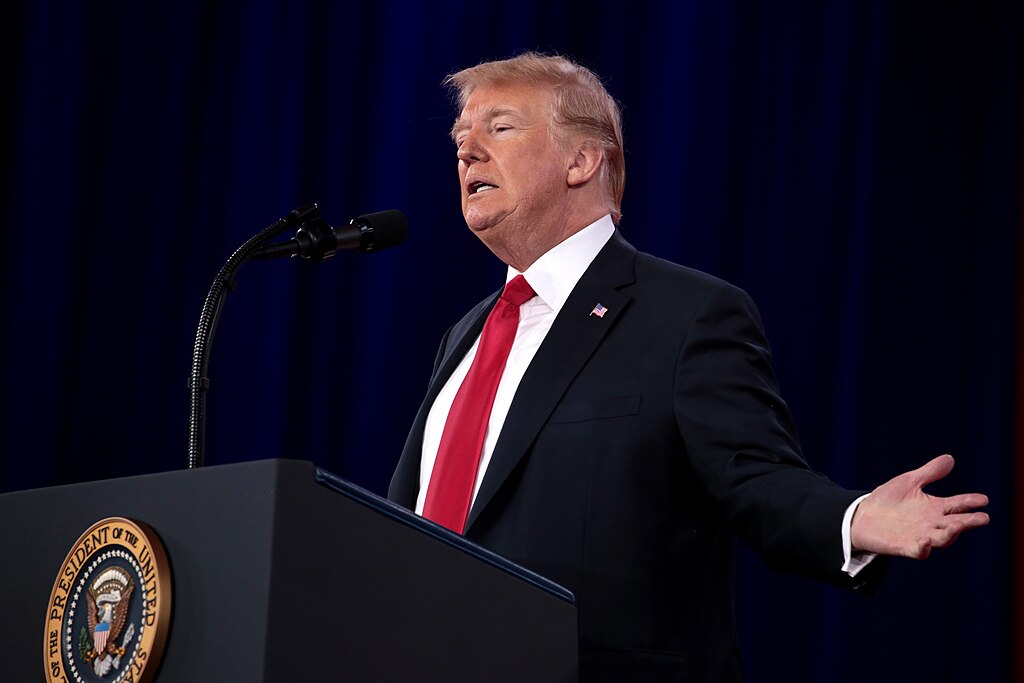Donald Trump’s anticipated healthcare reforms for 2025 have sparked intense national discussions as details of his proposals emerge. The reforms aim to overhaul the Affordable Care Act (ACA) by focusing on lowering costs, expanding insurance choices, and improving accessibility. While supporters applaud his promises to prioritize affordability, critics question the viability of his plan and its potential impact on vulnerable populations.
A Push for Affordable Insurance Plans
Trump’s healthcare reforms are expected to introduce new, affordable insurance options aimed at middle-class families and small businesses. His plan emphasizes flexibility, allowing consumers to choose coverage tailored to their needs rather than the one-size-fits-all approach under the ACA.
Advocates argue that the proposal could provide relief for families struggling with rising premiums. For small businesses, reduced costs could mean broader insurance options for employees, boosting satisfaction and retention. However, experts warn that cheaper plans could lead to reduced coverage, leaving policyholders with higher out-of-pocket expenses for critical medical care.
Expanding Access to Healthcare for Underserved Communities
Another key pillar of Trump’s reforms focuses on expanding healthcare access for rural and underserved areas. His plan proposes increasing funding for community health centers, investing in telehealth technology, and incentivizing medical professionals to work in these regions.
While this approach has garnered praise for addressing healthcare disparities, critics question how Trump plans to fund these initiatives. Some also worry that a lack of regulatory oversight might compromise care quality, especially in telehealth services.
Public Reactions on Social Media
Social media platforms erupted with diverse opinions after the announcement of Trump’s healthcare proposals. Here’s a snapshot of the online discourse:
- @PolicyGuru2025: "Flexible insurance plans sound great, but affordability must not come at the cost of coverage."
- @SmallTownCare: "Rural areas finally getting attention! Let’s hope these promises translate into real action this time."
- @HealthFirstNow: "Community health center funding is a step in the right direction. Telehealth expansion is long overdue!"
- @PremiumsTooHigh: "Lower premiums sound nice, but what about hidden costs? Trump needs to address transparency issues."
- @HealthcareWorker88: "More doctors in rural areas? Fantastic idea, but how will they incentivize us to move there?"
- @BalancedBudget: "Where’s the money coming from? These reforms must not increase the national deficit further."
Challenges and Hurdles
While Trump’s vision promises a brighter future for healthcare, the road ahead is fraught with challenges. His plan’s reliance on state-driven healthcare reforms raises concerns about consistency, as states with limited budgets may struggle to implement changes effectively.
Additionally, experts emphasize the importance of balancing affordability with comprehensive coverage. Without careful planning, the reforms could leave low-income individuals and those with pre-existing conditions at risk of inadequate care.
Donald Trump’s healthcare reforms for 2025 signal a bold attempt to reshape the industry, promising affordability, flexibility, and accessibility. However, success hinges on transparent execution, bipartisan support, and sustained funding. As debates continue, millions of Americans are watching closely, hoping these reforms can deliver on their promise of a healthier, more equitable future.



 Trump Administration Halts Immigration, Green Card, and Citizenship Processing for 19 Countries
Trump Administration Halts Immigration, Green Card, and Citizenship Processing for 19 Countries  Australia and Japan Strengthen Defence Cooperation Amid Rising Regional Tensions
Australia and Japan Strengthen Defence Cooperation Amid Rising Regional Tensions  Maduro Confirms “Respectful” Call With Trump, Signals Openness to Diplomatic Dialogue
Maduro Confirms “Respectful” Call With Trump, Signals Openness to Diplomatic Dialogue  Israel Receives Body of Deceased Hostage as Rafah Crossing Reopening Hinges on Final Returns
Israel Receives Body of Deceased Hostage as Rafah Crossing Reopening Hinges on Final Returns  China’s Expanding Maritime Military Presence Alarms Taiwan and Japan
China’s Expanding Maritime Military Presence Alarms Taiwan and Japan  Honduras Election Turmoil Deepens as Nasralla Alleges Fraud in Tight Presidential Race
Honduras Election Turmoil Deepens as Nasralla Alleges Fraud in Tight Presidential Race  U.S. Justice Department Orders Intensified Probe Into Antifa and Domestic Extremist Groups
U.S. Justice Department Orders Intensified Probe Into Antifa and Domestic Extremist Groups  UN General Assembly Demands Russia Return Ukrainian Children Amid Ongoing Conflict
UN General Assembly Demands Russia Return Ukrainian Children Amid Ongoing Conflict  U.S. Defense Chief Pete Hegseth Defends Controversial Second Strike on Suspected Drug-Smuggling Vessel
U.S. Defense Chief Pete Hegseth Defends Controversial Second Strike on Suspected Drug-Smuggling Vessel  Trump and Lula Discuss Trade, Sanctions, and Security in “Productive” Phone Call
Trump and Lula Discuss Trade, Sanctions, and Security in “Productive” Phone Call  Honduras Election Turmoil Intensifies as Nasralla Blames Trump for Shift in Results
Honduras Election Turmoil Intensifies as Nasralla Blames Trump for Shift in Results  U.S.-Russia Talks Leave Ukraine Peace Efforts Uncertain
U.S.-Russia Talks Leave Ukraine Peace Efforts Uncertain  Michael Dell Pledges $6.25 Billion to Boost Children’s Investment Accounts Under Trump Initiative
Michael Dell Pledges $6.25 Billion to Boost Children’s Investment Accounts Under Trump Initiative  New Orleans Immigration Crackdown Sparks Fear as Federal Arrests Intensify
New Orleans Immigration Crackdown Sparks Fear as Federal Arrests Intensify  Taiwan Opposition Criticizes Plan to Block Chinese App Rednote Over Security Concerns
Taiwan Opposition Criticizes Plan to Block Chinese App Rednote Over Security Concerns  IMF Deputy Dan Katz Visits China as Key Economic Review Nears
IMF Deputy Dan Katz Visits China as Key Economic Review Nears 































